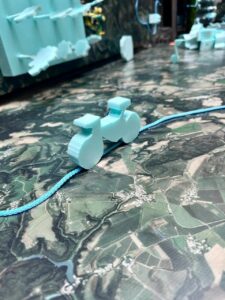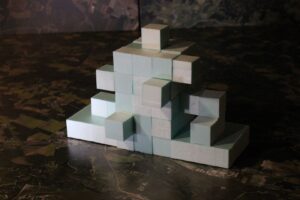

Housing is Healthcare
Description
Where do you go when there isn’t a place to call home? In what parts of the city do those without homes find shelter and comfort, and where can we find them? Are there ways in which we can make these spaces more comfortable? Can we find them a home in the same place they were stripped away from one?
The concept idea for this project was to tackle two major issues in the Czech Republic: homelessness and brownfields, and come up with a simultaneous solution for both. Despite the large scale, the nature of these problems is that more often than not, they go unnoticed. Nonetheless, these issues concern all humanity as a whole, and therefore should be regarded towards with the respect and effort that they deserve.
Many homeless people, especially those who have been out of a home for a long time may reject the idea of moving into a brand new home. This happens due to the large contrast between the harsh environment that they have gotten used to, and the warm and comfortable space that is provided to them. Therefore I have developed a four-step design to facilitate this process of helping people find comfort in a home that they once used to live in.
The first phase is Inflatable Shelters, otherwise known as emergency shelters. The idea of Inflatable Shelters comes from the need of having something that protects the homeless during severely cold winters. Nonetheless, these may also be utilized during other times of the year. They are primarily made out of recycled plastic and are meant to be connected to vents of buildings or vents located in parks in order to be inflated and also in order to be kept warm inside. They may be of different shapes and sizes and can be placed nearly everywhere in the Czech Republic.
The second phase is Build-a-Pod, and it allows people to build their own homes. These flexible and build-it-yourself pods can be assembled by the people themselves, are easy to carry, and adaptable to all kinds of sites. They are triangular-shaped, six-piece made pods and can be used for longer lengths of time as they provide sustainable housing.
The third phase is Parasitic Sleeping Pods, meant to be attached to scaffolding and to be used as an emergency shelter. These sleeping pods can be made at various sizes and can be attached to the facades of buildings or can simply lay on the ground. They are intended to be used as units of a parasitic façade to be placed on outdated or abandoned buildings of the Czech Republic.
The fourth and final phase is the Humanities Center, intended to be a long-term shelter for the homeless. The creation of a long-term humanities center will provide long-term housing for those in need or lacking a home. It will be a safe space for those that have been left on the streets. It will be used by residents as a Proxy Address as well. This will allow them to have an address, therefore allowing them to apply for jobs and have access to all civic amenities same as all.
Additionally, these phases are not meant to be in order of time. It is within the comfort that those in need feel, that they choose which phase accommodates and facilitates their needs best. The only order that has been applied is the scale of each design in terms of how many people it can provide for and how large is the area axis that it will reach.
Impact
Considering how large of a scale this project maintains, the impact that it would have in the Czech Republic would be slowly aiding in the elimination of the issues of homelessness and brownfields. Both problems have been existing in the Czech Republic for a long time and they are issues whose real scale is not actually known. This project will not only help people leave the streets for a better home, it will also provide new data, with which we can prevent homelessness and the accumulation of brownfields altogether.






